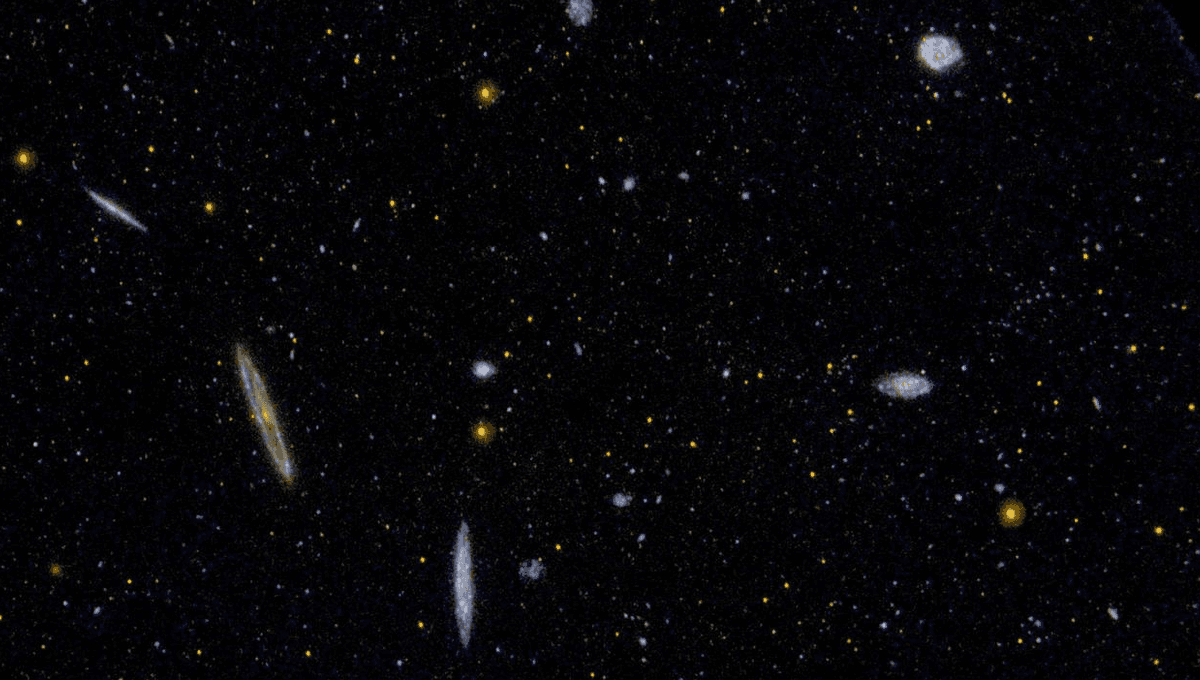
If you have had the misfortune to date a narcissist, or work for one, you might have used the expression; “They think they’re the center of the universe.” Sadly, we shouldn’t mock too hard, because in a sense such people are right, at least about that. That’s because everyone is the center of the universe, not just metaphorically, but physically. In one sense the universe has no center, but another way of looking at it is that everywhere is the center, particularly if someone there is looking out.
A Very Brief History Of Our Place In The Universe
Humanity can be a pretty narcissistic species, so it is not surprising that for most of our existence we apparently thought we lived at the center of everything. Plenty of people have looked at the world around them and concluded they lived at the center of a flat Earth, and that the Sun, planets, and stars turned around them.
Early scientists proved the flat part wrong in the days before you could photoshop an image to make it look like a distant ship was all equally visible. However, the idea that there must be a center to everything, and that we obviously belonged at the heart of things, was so engrained that we went on believing everything circled the Earth for a few thousand more years.
The hard-won Copernican Revolution displaced the Earth from the center, but for a while, the Sun was seen as the universe’s heart. Only with observations the Milky Way was much more densely packed in the direction of Sagittarius than anywhere else, was the Sun downgraded to a modest star in the galactic suburbs.
In the 1920s as astronomers came to realize the Milky Way was just one galaxy among more than we could count, humanity had to come to terms with the recognition that our location was not special at all.
Back To The Center
At this point it was still natural to think that the universe had a center, whether or not there was some virtue in being close to it, it was just nowhere near us. This perception shook philosophy and did a lot to undermine faith in religion. If Earth is a tiny insignificant dot it’s hard to believe the universe’s creator would care so much about our precise patterns of worship.
Then, however, Edwin Hubble, having previously helped reveal the Milky Way’s status as an ordinary galaxy, noticed that the more distant a galaxy is from us, the faster it is moving away. If everything was rushing away from us equally in all directions, maybe we were the center after all. A case of social anxiety might cause a jump to the conclusion we, or at least our galaxy, had committed some grievous sin and no one wanted to be near us, but by this time scientists’ thinking had evolved.
They realized we needed to think about the universe differently. Describing it like a balloon that is inflating, so that everything is getting further away from everything else, can be helpful as an introduction, but it’s also misleading. There is no edge to the universe like a balloon’s skins, which would imply a center. It’s not a perfect analogy, but thinking there must be a center to the universe is a little like our ancestors thinking their patch of land was the center of the Earth. It made some sense if the Earth was flat, but on the surface of a sphere, no point is the center.
Earth still has a center of course, but no one lives there. The nature of the universe is so different from the everyday objects we experience that we lack better metaphors to compare it to. However, cosmologists are confident the universe has no counterpart to the Earth’s core. Equally, there is no one place where the Big Bang occurred, it happened everywhere.
On the other hand, much, probably most, of the universe is hidden from us. This hidden universe is so distant that light has not had time to reach us in since the universe began. What we can see is called the observable universe, the area close enough that light has been able to reach us in the 14 billion years or so since the Big Bang. We might expect the observable universe to be a sphere with a radius of 14 billion light years, but because of the way space has expanded in that time, that radius is actually about 45 billion years.
Irrespective of the size, the speed of light means that we can see equal distances in every direction, unless some very odd observations turn out to be right. Therefore, as far as the observable universe goes, we really are at the center.
An astronomer in the Andromeda galaxy could see slightly further than we can in the direction away from us, but slightly less far in the direction towards us. So they too would be the center of the observable universe. It’s just that it’s a slightly different universe, one that mostly overlaps with ours, but with small differences. The further away an observer is, the less their observable universe overlaps with ours.
In the end then, the narcissists are right that they are the center of the universe, but where they are wrong is in treating everyone else as being at the periphery. Scientifically as well as morally, everyone is at the center of their own universe, and to the extent they overlap, we all need to respect each other’s truth.
Source Link: Does The Universe Have A Center And If So Where Is It?